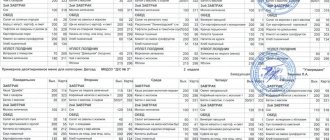Regulatory framework for location rules
Commodity neighborhood is a zonal delimitation of goods based on the principle of compatibility. This storage method prevents food quality from deteriorating.
The main legal acts that regulate the principles of commodity proximity of food products:
- SanPiN 2.3.2.1324-03.
- SP 2.3.6.1066-01.
Sanitary and epidemiological rules and regulations determine the hygienic requirements for shelf life and organization of food storage. Organizers of trade and circulation of food products are guided by sanitary rules. Sales are controlled:
- raw materials;
- semi-finished products;
- prepared food products.
There are separate groups of goods that are stored in compliance with the principles established by technical specifications (TU) and state standards (GOST).
Rospotrebnadzor monitors and checks whether trade and public catering enterprises comply with the rules for placing food in accordance with SanPiN, as well as other sanitary and epidemiological standards.
Sanitary rules do not apply to the storage of packaged drinking and mineral water, dietary supplements, bacterial starter cultures and starter cultures.
Rules for compliance with zonal demarcation
Food products of different groups are stored differently and for each case certain norms of zonal delimitation are established. According to clause 7.6. SP 2.3.6.1066-01, organizations are required to comply with the rules for the location of goods and warehousing standards.
In the shop
The activities of legal entities and individual entrepreneurs who are engaged in the production, storage, transportation and sale of food products are regulated by SanPiN 2.3.2.1324-03.
Food proximity rules are based on general storage requirements:
- manufactured and sold food products must be stored in conditions that guarantee food quality and safety;
- food products are stored at a temperature appropriate to the type of product, a suitable level of humidity and optimal light conditions;
- products are accepted and placed in a warehouse, refrigerator or on retail shelves in clean, dry and undamaged packaging without foreign odors;
- the quantity of stored goods must correspond to the area of the warehouse or the volume of the refrigeration chamber;
- perishable and especially perishable food is intended for short-term sale;
- goods of the first group are stored at low temperatures (not higher than +6⁰С) and in compliance with other necessary requirements.
The law prohibits retail enterprises from repackaging products received from a supplier into another (smaller) container.
According to sanitary standards, food products are prohibited from being stored in places not intended for this purpose. They cannot be transported or stored together with non-food products.
Separation criteria
By degree of readiness
In paragraph 3.3.4. SanPiN 2.3.2.1324-03 states that ready-to-eat food should not be stored together with raw materials and semi-finished products. Such storage is unacceptable, even if raw meat and cheesecakes require maintaining the same temperature regime: a violation can lead to bacterial contamination of ready-made dishes. Separately, you can read about the expiration dates and storage rules for meat and cottage cheese.
Similar principles are observed when transporting food: raw products are transported separately from semi-finished products, and prepared food is not transported along with raw materials and products that have undergone primary culinary processing.
The sale of products of varying degrees of readiness is also organized in compliance with product proximity: semi-finished products, food raw materials and culinary products are sold in different departments.
Processed fruit and vegetable products are sold separately from raw vegetables and fruits.
According to storage conditions
Commodity experts operate in three categories of food products, dividing all food products into perishable, especially perishable and non-perishable. According to the law, goods of the first two groups require special storage conditions. Food with a short shelf life is placed only in refrigerators. Low temperatures are not needed to store non-perishable goods.
This leads to a natural zonal distinction: what should be stored in the refrigerator is not placed on the shelf of the sales rack in the common room. A similar principle is observed in relation to chilled, frozen and frozen goods: to store fresh meat you need a common refrigerator compartment , and frozen semi-finished products are sent to the freezer.
By smell and absorption properties
In clause 7.6. SP 2.3.6.1066-01 contains an important clarification regarding product proximity: food with a rich, specific aroma cannot be stored in close proximity to other products with neutral or fundamentally different odors.
Herring, smoked meats and spices should not be placed near products with a porous structure and increased ability to absorb extraneous aromas, otherwise the purchased cookies will exude the aromas of smoked sausage or garlic sauce.
By degree of goodness
The law states that quality goods cannot be placed next to expired, spoiled or suspicious-looking products.
This principle helps to avoid premature damage to good quality products.
Mandatory delimitation groups
There are groups of food products that must be placed in separate refrigerators. If the store does not have the required equipment or does not have sufficient space, such products can be stored in separate isolated compartments of one refrigeration chamber:
- fresh milk and fermented milk products (find out about expiration dates and storage rules for milk and kefir);
- pasteurized milk, chilled butter and sour cream;
- fresh vegetables and fruits;
- all types of cheese (read about expiration dates and storage of cheese);
- fresh meat products in a chilled state;
- fresh fish (chilled);
- chilled semi-finished meat products;
- chilled semi-finished fish products;
- deep-frozen products;
- dumplings (about storing dumplings - here).
What can you store in one place?
According to sanitary standards, food with the same storage conditions and similar/similar sorption properties can be placed in close proximity.
In the refrigerator at home
- Perishable and especially perishable food products are stored in low temperature conditions.
- When storing, it is important to take into account the physical state of the product: chilled meat and fish are stored in a common chamber, frozen products are placed in the freezer.
If space allows, it is advisable to maintain product proximity in the freezer: frozen meat, fish and fruit and vegetable stocks are placed in separate boxes. - Do not place raw foods, semi-finished products and ready meals on the same refrigerator shelf.
- Place fresh meat and fish products on separate shelves. Make sure that raw plastic products are packaged carefully as leaking meat or fish juices may spill onto the shelf and penetrate into the lower levels of the chamber. We wrote separately about the shelf life and storage of meat and fish.
- All products must be packaged: food should not be stored on open surfaces (plates, bowls, dishes, pots without lids).
- Products with strong odors should be sealed and placed on a separate shelf.
- Dairy products (milk, sour cream, butter, cheese, cottage cheese) can be stored together.
- Eggs are stored in special compartments, separate from other products.
- Vegetables, fruits, fresh mushrooms and herbs are placed in the freshness zone - special plastic drawers. Spoiled fruits must be immediately removed from the total mass.
In public catering
Public catering establishments are required to comply with the following sanitary standards and rules:
- Finished food, semi-finished products and raw materials must be stored separately.
- High-quality food products are stored separately from written-off substandard and expired food products.
- All types of products are stored in packaged form.
- Each container of food must be appropriately labeled indicating the contents, date and time of production and expiration date.
- Cutlery must not be left in food containers.
If a cafe or restaurant serves dishes prepared using different technologies (from different cuisines of the world), production premises and refrigeration chambers must be zoned taking into account storage conditions and SanPiN rules.
For example, sushi and rolls are allowed to be prepared in kitchens where the temperature is maintained below + 16⁰C, and raw chilled fish should be stored in separate refrigerators.
In stock
- The warehouse must maintain conditions that guarantee the preservation of the good quality and safety of food: the required temperature and light conditions, the required level of humidity. If necessary, air circulation is provided.
- Products must not be stored in bulk on the floor or outside the warehouse.
- Commercial equipment, household supplies, carts and empty containers cannot be left in the warehouse.
- Food should not be placed near drainage and sewer pipes, as well as heating appliances.
- High-quality and low-quality products cannot be placed in the same warehouse (damaged or expired goods are written off and disposed of, or stored in a separate room).
- Finished products, semi-finished products and raw materials cannot be stored in one warehouse.
- Food products are stored separately from non-food products.
- Meat from slaughtered animals in carcasses and half-carcasses is stored in a suspended state on brass hooks. Hanging meat carcasses and parts of carcasses should not come into contact with anything.
- Rye and wheat varieties of bread are subject to separate storage.
Commodity proximity is determined by several basic rules:
All types of purchased ingredients must be stored in original containers. These can be cans, barrels or boxes. If the packaging is damaged during transportation, it must be replaced with a new one.
YYYY and violation of the integrity of the packaging: large-piece Nocture kebab at the price of rub. YYYY, cutlets without labels, manufacturer's prices.
But during the last working group of retailers and Rospotrebnadzor, which took place on July 29, representatives of the service stated that such an interpretation of the new norm is unacceptable. The separation of goods in stores must be physical.
Provide for the use of mechanisms for moving goods. 3) take into account the individual characteristics of the goods: chilled meat carcasses must be stored in a suspended state, and frozen ones must be tightly stacked on stock shelves; 4) also take into account the quality of the products being pledged, shelf life and the order of sale. 3.
Food product compatibility table according to SanPiN
The commercial compatibility of food products depends on the organoleptic properties of the product (physical state, structural features, presence of a strong odor or potential danger to other types of food) and storage conditions. There are categories of goods that can be placed in one chamber.
Products belonging to different product groups cannot be laid out on the same shelf and stored in common compartments.
Below is a table of compatibility of food products according to SanPiN.
| Type of food | Storage temperature | Special conditions | |
| Frozen food | meat products | from – 10⁰С to – 30⁰С |
|
| fish products | |||
| fruits and vegetables | |||
| ice cream | |||
| |||
| Canned food | jam and jam | from 0⁰С to +20⁰С | |
| |||
| shelf-stable confectionery | |||
| Dry grocery | tea | no higher than + 20⁰С | Temperature changes are not allowed |
| coffee | |||
| flour and cereals | |||
| salt and starch | |||
| sugar | |||
| seasonings | |||
| Refrigerated goods | meat | from – 1⁰С to – 4⁰С | ventilation |
| fish | |||
| eggs | from 0⁰С to + 4⁰С | ||
| milk | |||
| from – 2⁰С to – 5⁰С | ||
| salted, smoked fish products | |||
| sausage and sausage products | |||
| cream confectionery | from 0⁰С to + 6⁰С | ||
| some vegetables and fruits | from – 1⁰С to + 1⁰С |
What you need to know about food storage
It is not recommended to store fruits at temperatures below 0, as they begin to deteriorate and become unfit for consumption. If there is high humidity in the room, this can lead to the formation of mold and the beginning of rotting of food. Juices, syrups and jams become candied if stored incorrectly.
Potatoes should be stored in bags and require constant lighting. It is recommended to monitor the air humidity; it should be at least 80%.
It is recommended to store canned food at low temperatures of 0–8 °C.
Semi-finished products that have not been sold within 12 hours cannot be stored in the refrigerator, as bacteria may begin to develop in them.
Consequences of non-compliance with sanitary standards
Failure to comply with legal sanitary standards and rules can deteriorate the quality of food products, reduce shelf life and storage, and also make food products unsafe for consumption.
For what reasons could this happen? Raw meat or minced cutlets can contaminate nearby borscht or stew with pathogenic bacteria. Thermally unprocessed products are a source of pathogenic microflora, so the rules require separate storage of products with varying degrees of readiness.
Even if the product has not become hazardous as a result of storage, quality may be significantly affected.
A product with altered organoleptic properties is less valuable and beneficial for the body. If you bought dry biscuits and spicy salted herring at the store, then even carrying such incompatible goods home is worth it separately, otherwise you won’t be able to rid the biscuits of the persistent aroma of marinade and spices.
Fruits and vegetables should be periodically sorted, getting rid of rotting and overripe specimens. If this is not done, the entire volume of production will soon spoil.











